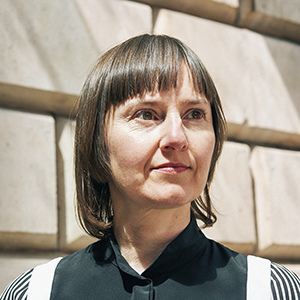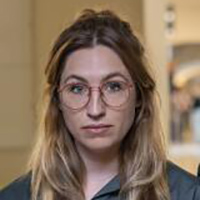Vicky Richardson

Royal Academy, Curator, London, United Kingdom
What inspired you to want a life in Architecture and the creative industries?
I stumbled into it, taking it step by step. To begin with, I loved drawing and making things. I went to Art school to do a Foundation course and then started a degree in Fine Art, but it all felt to self-absorbed, and I was really political at the time (still am!). I switched to Architecture because designing buildings felt like a good way to be immersed in the world. It turned out that I didn’t have the patience for designing buildings, and having left university (which was a polytechnic in those days), I went off to study journalism. After a couple of years, I was drawn back to architecture and I managed to combine journalism with design by working on architecture magazines. Architecture and journalism in some ways are not so different – you have to investigate the state of the world, adapt to many different contexts and ask lots of questions. Recently, I’ve returned to designing and making things which has been very satisfying.
Who inspired you in finding your path to Architecture/Film and the creative industries?
There are lots of inspirational people I’ve met over the years: my art teacher, Miss Hardiman, taught me about drawing. She followed the methods of Betty Edwards ‘drawing on the right hand side of the brain’. I also had a brilliant History teacher, Miss Weaver. Although I didn’t do very well in History at the time, 30 years later I went back to uni to do a Masters in Early Modern History…so it’s never too late! At art school I was taught by a lovely artist called Roger Ackling, who was gentle and supportive at a time when I was quite lost. At Architecture school, I had a wonderful tutor, Allen Cunningham who was very patient and inspiring in his love of Modernism – at the time I was more interested in organising demonstrations than doing my college work, but he helped me scrape a degree. Later on people who inspired me were figures from history, like Rosa Luxembourg and Thomas Paine. But also individuals I met who were pioneers in their field and trying to push against the establishment – Jules Wright comes to mind. She set up the Wapping Project in 2000 which was an amazing art space in East London. And Claire Fox, who runs the Academy of Ideas, which is a very important place for debate about the world.
How you unlock obstacles and overcome bias in your work?
I’ve always found that talking to people helps find a way through. I particularly value the opportunity to visit and interview designers and architects in their studios, to talk through ideas. I also think travelling and working with people from other backgrounds is incredibly valuable. When you’re too immersed in your own world, you forget that people are dealing with all kinds of issues in their lives and work. I recently had the chance to curate an exhibition in China and I worked with Chinese curators and designers. It was challenging and frustrating to make something complex from such a long distance, but when I met with them in person and understood what they were dealing with, I realised I had allowed general prejudices about China to influence me. It’s so important to meet people in person and see the world through their eyes.
What improvements do you feel are required to promote effective change in the academic and working environment?
Art education is incredibly important. I’d like to see better resources in schools for teachers, and more freedom for good teachers to follow their instincts. It’s wrong how young people are being forced to choose a career or a path aged 15 or 16, and the punishing way GCSE results can stop them pursuing their interests so early on. I’d like to see an end to the artificial separation between different areas of knowledge – art, science, engineering, philosophy, architecture and history…all these things are connected.
When it comes to the working environment, I’d like to see design, architecture and the arts become aspirational so that the brightest and most talented young people are attracted. Part of that is better pay, but it’s also about designers and architects raising their own expectations for what’s possible and making more ambitious and exciting proposals for the future. People working in creative fields have the potential to imagine an alternative world and we need to use that to draw in the next generation.














